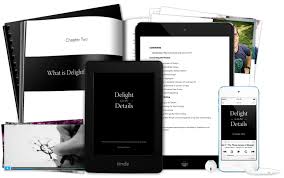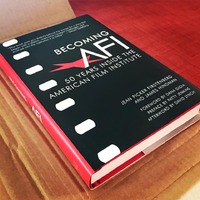I continue with my series of year-end posts discussing my favorite media experiences of the year with books, my first love. I cannot go to sleep without reading a few pages. I rarely drive without an audiobook in mid-chapter. I never fly without a Kindle-load from my list. The three types of “books” (paper, ebooks, audiobooks) find their way onto my list in various ways.

Books on paper are almost always gifts. Sometimes because of my Amazon wish-list, but rarely any more, since I specify the Kindle edition, and sometimes from the library, especially choices for my book club. Kindle downloads come as gifts now (I’ve trained my friends), but more than anything, they are impulse purchases, usually after reading a rave review or a relentless reminder from Amazon’s collaborative filter. I even tried Hoopla, an app offered via the LA Public Library. (Not so user-friendly.)
As a result, the longer I live, the more behind I get. I just can’t read enough, or fast enough, to get to all those books-in-waiting. Hence, I make no pretense of trying to rank the year’s “best” books as I do with movies and television. These are the titles that brought me the most pleasure in 2014, no matter the year in which they were published. And to which I gave four stars on my trusty Goodreads site, where I review most everything I read. Feel free to friend or follow me there or Facebook to get reviews more quickly.
The Kills (The Kills, #1-4) by Richard House
A war novel with few soldiers and little fighting. A mystery within a mystery. A meditation on fraud and memory. This and much more, House’s massive story cycle or collection of related books -- shall we call it a quadtych (yes, a very bad neologism) manages despite its 1,000 page length to hold one's attention with a cavalcade of characters, settings, hurling plots and, well, mysteries. It wouldn't work, of course, if the writing weren't so damned good, which it certainly is -- the chilly lovechild of an unholy three-way between Patricia Highsmith, Graham Greene and John le Carré, and maybe a soupcon of David Foster Wallace's brilliance at making the quotidian feel quite compelling.
The first book, in which a military contractor in Iraq escapes from what becomes the central event of the story cycle -- the fleecing of a multi-million-dollar budget earmarked for a brand new secret city in the Iraqi desert . Is our hero a dupe, under the sway of the puppetmaster who hired him, and who runs the Halliburton-like contract firm? His misadventures on the run in Turkey and Malta with some German filmmakers made me think of Greene, a bit like The Comedians.
By the time we finish the cycle, though, most of the assumptions about who did what and who knew what are brought into question, or at the least, in very high relief. Down in Malta, we have a diplomatic family in disarray, having fled chaos in Syria, cleverly intertwined with a tale of the Russian Mafia, corporate hit men, private language schools and various factotems who are still trying to figure out what happened to those pursuing our original fugitive.
Hovering above both stories is the tale of a bloody multiple murder which imitates a crime in a novel -- this is the subject of the third book, set in Naples. Baroque double switchback would be how I'd describe that plot. Is everyone lying?
Finally, I would not want to leave out book #2, which is in some ways the most rooted in the point of the whole exercise, since it's set in Iraq and involves a range of men, recruited to run a remote "burn site" in the desert, up until the point when they learn that this is to be the site of the new and secret "Liberty City." Chronologically, its events come first. Gritty, confounding, confusing, maddening, this is the world of military contracting and the time-honored methods of fleecing governments and exploiting the working class.
If you've got the time, this masterpiece is worth the effort.

The Goldfinch by Donna Tartt
I want to deliver a breathless rave of a review about this scrumptious novel, coin a blurbable quote about the incomparable narrative thrust, endearing cast of characters, and pristine depiction of time and place, but my words are not up to the wonderful experience I had reading this book, one of the best reads for me of the last few years. I'd not read Tartt before, but compelled by some great reviews and its appearance on the best-seller lists, I added The Goldfinch to my wish-list and got it for Christmas. Boy am I glad! Slightly longer than typical best sellers at 700+ pages, I found myself racing through the thing, a hundred pages a sitting, often into the night. Tartt has a gift for storytelling, that's for sure, and I'm glad I opened the package.
Police (Harry Hole #10) and The Son, both by Jo Nesbø
Harry Hole snarls more authentically than most angry, brilliant, alcoholic police detectives. He is one angry Mutha, and with good cause. He seems to be the only Norwegian cop who can actually solve complex criminal cases, but the bureaucracy and the criminal underworld just won't let him do his job, and won't leave him alone when he tries to give up. I love Harry Hole, and I love the tales Nesbø weaves for him to interact with. They are, in many ways, the apotheosis of the Scandinavian police procedural, a genre I have been in love with since the days of Maj Sjöwall and Per Wahlöö (See this year’s New Yorker profile of Nesbø for more back story).
We have here, indeed, another very complex tale of crime perpetrated against cops, and the solution blocked by other cops, all coming together to reveal the motive, and therefore, the criminal. Thanks Harry. Thanks Jo.
Is there a word for the feeling a reader (at least this reader; at least when reading genre fiction) when you cannot figure out why, but you cannot stop reading? Nesbø is that rare writer, right now at the top rung worldwide, whose mastery of the form is so perfect that the strutwork disappears and the reader is left gasping from the combination of perfectly realized scenes, indelible characters, perfect depiction of place, and thematic importance. What makes one gasp is that each of these elements is revealed through the propulsive and accelerating engine of the narrative, the plot, the sheer storytelling power -- what happens next is the itch and the scratch of this kind of reading.
Certainly, it is made easier by Nesbø’s fluency as a writer, but he isn't showy, he's efficient. Which is not to say mechanical or heartless, I hasten to add, since he (and we) are always aware that he's working in a genre which is almost 80 years old, and to succeed, he must advance the form while maintaining its conventions. Which he does better than anyone writing now. He has provided me with many hours of reading pleasure through the Harry Hole series, and of course, the series that centers on a protagonist over time and many novels is itself a mainstay of the genre. Here, Nesbø introduces a new detective whose qualities seem, at least at first, to be a bit more conventional than Hole's. Until we find that, well, he's a compulsive gambler, rather than a drunk, and his backstory plays significantly in the unfolding of the plot. I don't do spoilers, but let me just say, the last ten pages of the novel not only wrapped up loose ends and plot points, but blew my mind in the process. Jo Nesbø, I think I love you.
Click to read more ...
 Tuesday, October 17, 2017 at 10:56 AM by
Tuesday, October 17, 2017 at 10:56 AM by  Nick DeMartino
Nick DeMartino 






